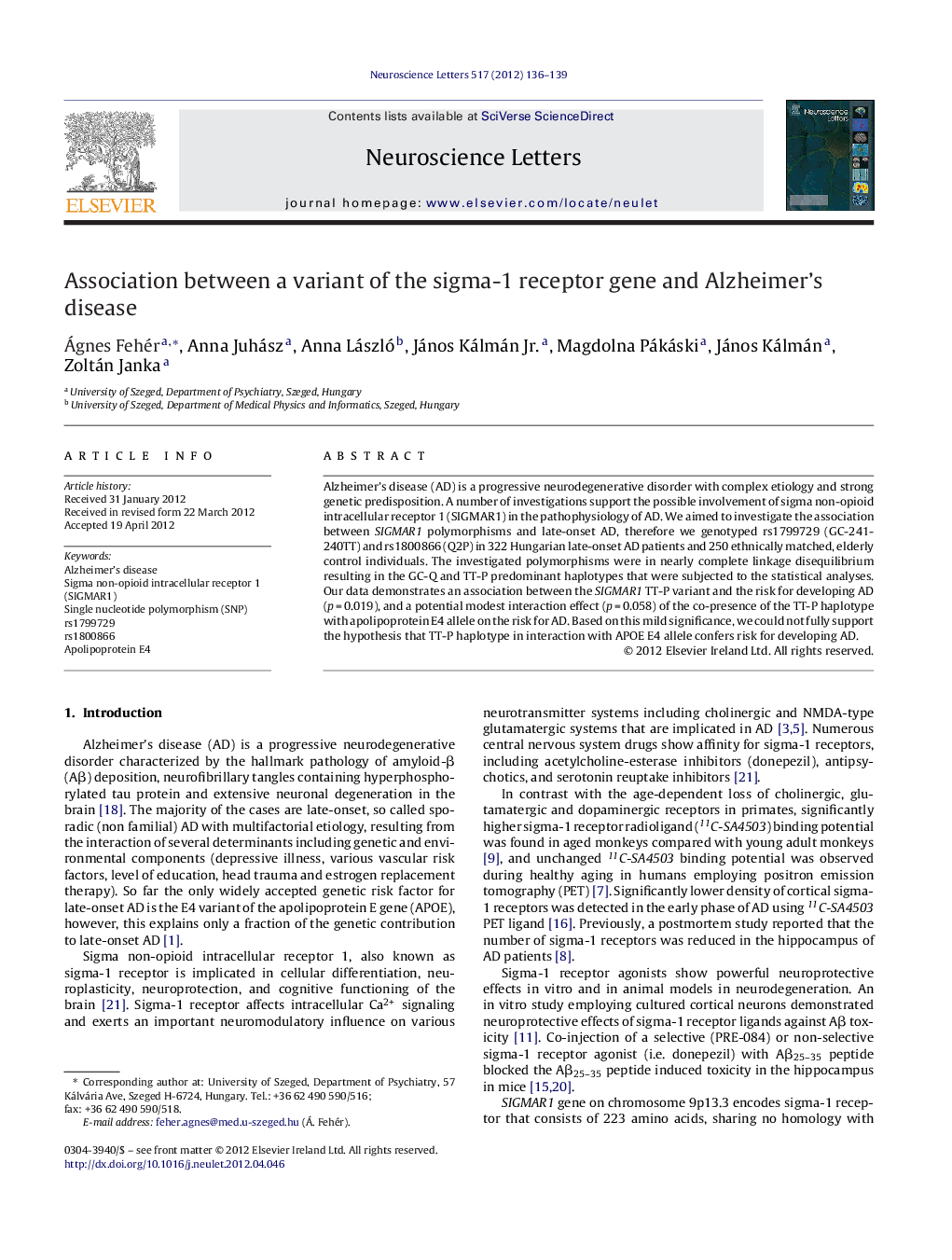| Article ID | Journal | Published Year | Pages | File Type |
|---|---|---|---|---|
| 4344534 | Neuroscience Letters | 2012 | 4 Pages |
Alzheimer's disease (AD) is a progressive neurodegenerative disorder with complex etiology and strong genetic predisposition. A number of investigations support the possible involvement of sigma non-opioid intracellular receptor 1 (SIGMAR1) in the pathophysiology of AD. We aimed to investigate the association between SIGMAR1 polymorphisms and late-onset AD, therefore we genotyped rs1799729 (GC-241-240TT) and rs1800866 (Q2P) in 322 Hungarian late-onset AD patients and 250 ethnically matched, elderly control individuals. The investigated polymorphisms were in nearly complete linkage disequilibrium resulting in the GC-Q and TT-P predominant haplotypes that were subjected to the statistical analyses. Our data demonstrates an association between the SIGMAR1 TT-P variant and the risk for developing AD (p = 0.019), and a potential modest interaction effect (p = 0.058) of the co-presence of the TT-P haplotype with apolipoprotein E4 allele on the risk for AD. Based on this mild significance, we could not fully support the hypothesis that TT-P haplotype in interaction with APOE E4 allele confers risk for developing AD.
► We investigated SIGMAR1 gene polymorphisms in Alzheimer's disease (AD). ► Rs1799729 and rs1800866 polymorphisms were in nearly complete linkage disequilibrium. ► GC-Q and TT-P were the predominant haplotypes. ► An association was found between the SIGMAR1 TT-P haplotype and the risk for AD. ► TT-P and APOE4 variants showed a potential modest interaction effect on AD risk.
